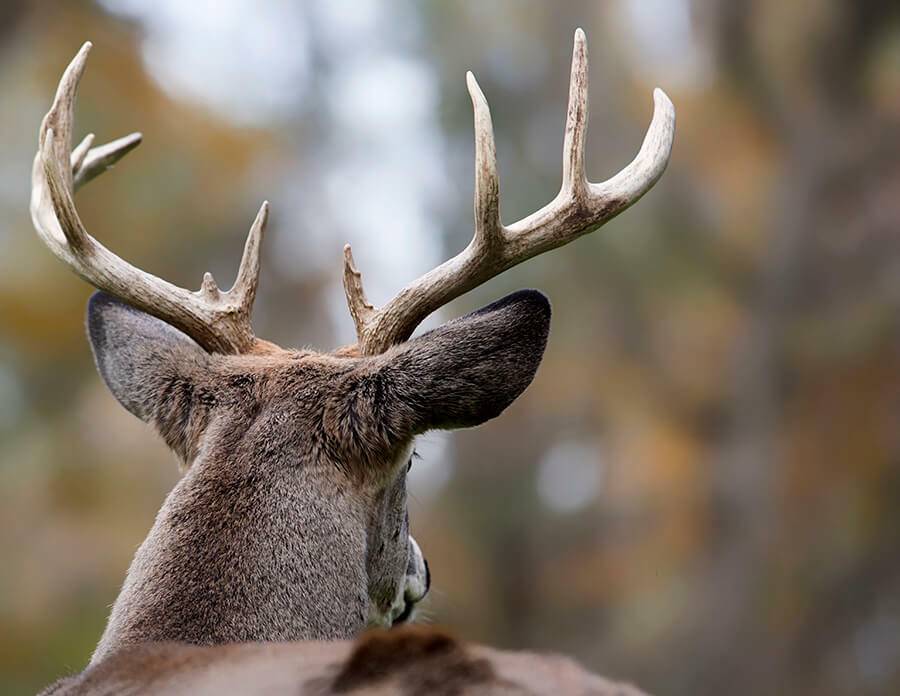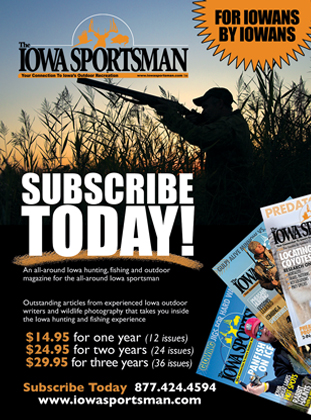Making the Right Decision

Making the Right Decision
It had happened before but too quickly. This time, the buck came in downwind, stopped to think about what he was smelling, and I had enough time to take a shot.
As I watched the arrow pass into his right side and bury itself under his fur, I knew that it wasn’t the perfect shot. He mule kicked and ran slightly up the hill in front of me before he circled back to my left and ran out of site into the deep timber in which I was perched in.
During the minutes after my shot, I replayed the hours leading up to that point. Standing there I went through my “mental checklist” of decisions I had made that had led up to my current situation.
I was in the stand at the right time. I was in the right place. And then, my reality began to turn for the worst. I realized that I had made a rushed shot. My excitement got the better of me when I took the shot. I hadn’t followed where the buck had run. My hopes began to sink at that moment. I knew that I had let the excitement of the situation get the best of wisdom. Now, I had to make the right decisions from here on out if I expected to find the buck I had just wounded.
I’ve been an avid bowhunter now for twenty years. In the fall, there is nothing that excites me more than the opening of the Iowa bowhunting season. Feeling that cool crisp fall air, the smell of the turning leaves, and being out in the timber engaged in a game of “cat and mouse” does something inside of me that is hard to explain. If you are a bowhunter, you probably know exactly what I’m talking about!
In twenty years of bowhunting, I’ve had to learn a lot in order to have success. The skill of hunting with a stick and string goes much deeper than other types of hunting. There are so many decisions to think about when it comes to this sport. Some of these decisions were passed on to me by mentors in the sport and some of these decisions I had to learn the hard way.
What I have learned is this, every year I learn something new. Sometimes it is learned from success and sometimes it is learned through failure. Regardless, it’s a valuable piece of information that I will store in my mental library until the situation comes up again when I can use it to make the right decision. I’ve taken some time recently to compile the six most common decisions and things to think about that I feel I have to wrestle with every time I head out on a bow hunt. My hope is that you, the reader, might store these away in your mental library to use in your hunts through the oncoming years.
In an effort to have some sort of organization, let’s start with the “beginning” of a hunting day.
Decision #1 – Waking Up
When it comes to hunting, I’m an early bird! Over my years in the woods, I’ve had more luck hunting the early morning than I have any other time of day. In these early hours, I’m hoping to catch the deer coming back from feeding into their bedding areas. Stomachs full, behavior calm, and ready to sleep off the day.
In order to be there in time, for me, that means getting into my stand 30 minutes before shooting light. That would also be one hour before sunup. It’s early, but it’s proven best.
Things to Think About:
• Deer like the cover of the timber. They are more protected. If you are hunting in the morning, you should be in or near a bedding area. They are more relaxed and a little less cautious allowing you to have a better chance of catching them with their guard down.
• Getting in the timber that early will make sure you don’t “run into” a deer returning to bed. It also makes sure that any disturbance you make entering the timber has a chance to settle down.
• I do hunt evenings too. But what I see in the evenings as deer come out to eat is cautious and alert behavior! Deer will approach the edge of the woods, food plots, etc. with EXTREME caution. Much different than their behavior when they return to their beds.
Decision #2 – The Weather
As a bowhunter, the weather of the day will play a large part in your success of the hunt. Weather conditions such as temperature, precipitation, wind direction, and wind speed will all have positive or negative effects on your hunt. Sometimes, the weather might be so adverse that it would not even be worth your time to leave the house.
I always check the weather the evening before as well as the morning of your hunt. Weather forecasters on the news do their best, but we all know, they’re not always perfect!
My “go to” choice for weather reporting over the last three to four years has been a weather app/website called Weather Underground.com or Wunderground.com. This will give me accurate hour-by-hour forecasting specific to the immediate area that I’m hunting.
Things to Think About:
• Wind direction is most important. As best as you try to cover up your scent, you are still breathing! If you’re breathing, you stink! Making sure your stand or blind is downwind of where you might see deer will increase your chances of success dramatically! If you screw this up, deer will remember and may avoid the area for a while.
• Depending on weather conditions, deer will be found in certain areas. If it’s extremely windy, deer may not be out in the open. Or, if it’s extremely cold, you can bet deer will be at food plots or food sources early in the day. If it’s raining, you can still find deer. However, some may choose to hunker down until the precipitation stops.
• Weather conditions may dictate whether you can handle being out and exposed to the elements. Knowing your limits and what you can handle is key to a hunt.
Decision # 3 – Your Stand / Blind Placement
Stand or blind placement is a key ingredient to a successful hunt. You should have good reasons for why you are placing a stand in a certain place. These reasons should be the result of a little bit of study and homework!
• Know the area that your are hunting. Take time in the off-season to walk around your hunting area and see what’s happening. Make a note of heavily traveled trails, food sources, bedding areas. Note areas of cover, good standing trees, and their positions compared to deer travel. Being comfortable in this knowledge will help you make some huge decisions.
I would also suggest that a person have more than one hunting position to choose from in their hunting area.
Things to Think About:
• Varying wind directions may restrict certain stands from being hunted. Where I hunt, there are most commonly west and southwest winds. Occasionally, I might have an east or a north wind. But each good hunting area I have, I make sure I have stand choices that will accommodate both wind directions.
• Cover is key. Just because you’re high up in a tree, or have a good camo pattern on your blind, does not mean you are “hidden”. Deer are smart! When hanging a stand, don’t entirely clear-cut your tree! Leave a few cover branches and create some shooting lanes. Take time to brush in your blind with tall grasses, cedar branches, and other natural surroundings.
• Make sure you have a reason to put a stand or blind in a certain place. If you have not seen ample sign to call for it, don’t put anything there! There’s a good chance you won’t see anything. Using trail cameras or just some scouting outings will verify your reasons for choosing certain areas.
Decision #4 – When to Shoot
Your target is in front of you. Maybe it’s the deer you’ve been after. Maybe it’s a surprise deer. Your target is coming closer and closer and your chance just might be coming up in the next few minutes.
This is the “make or break” time. Your series of choices here could lead to a freezer full of meat and a trophy in your hands. Or, it could leave you with a memory that you play over and over in your head wondering what you did wrong!
I’ve had both. That’s what keeps me doing this every year.
Things to think about:
• Be cautious of your movement! Wait for the right moments to stand up, reach for your bow, pull back. Make sure the deer has it’s attention elsewhere. Wait for it to look at the ground, look at other deer, look away from you. Any movement or noise you make could explode the currently opportunity.
• Wait for the right position of the deer. A broadside shot is best. Even a quartering away shot will be a confident choice. Full frontal or quartering towards should rarely be considered as a good shot. Being patient for the right position could be the difference of finding your deer or losing it forever.
• Staying calm is also the key to making a good shot. Shaking hands and nervous breathing could throw off your aim. Take a few extra moments to take some deep breaths. Concentrate on the shot, not the trophy.
Decisions #5 – After the Shot.
Your shot might have been true and yet, it might have been a huge blunder. Most hunters will know which way their shot went in a matter of moments. Keeping your nerves under control in order to guage the situation is valuable to finding your deer after you’ve shot.
Whether it is a perfect shot or a marginal shot, your decisions in this situation could allow you to recover a deer. If you see the deer fall, obviously, you’ve had success. But if your deer runs, watch the path it takes.
Give it some time, exit your stand or blind, and walk to where you last saw the deer.
Things to think about:
• A deer falling shortly after being shot is the perfect ending to your equation! Take time to think through all you did right and bank that information for future hunts.
• If you are now dealing with a marginal shot, you have to look at a few things to make your next decisions. What’s the blood trail look like. If it’s sporadic, not heavy, there’s a good chance it wasn’t lethal.
• If you’re blood trail is “thin” but the blood is dark, you need to give this animal time. It’s mortally wounded, but it will take time for it to expire. It’s unfortunate, but true. Pursuing it at this point only pushes it further and further away. It also could cause it more pain.
Decision #6 – The Recovery
If you’ve made a successful shot, at this point, your hunt is over and your tag is filled. Congrats!
However, if you’ve made a marginal shot, you have a little more work to do in order to recover your animal.
As a hunter, I believe that you must do everything in your power to do this. Out of respect for the life that you are taking, making every effort to recover the animal should be the responsibility of a hunter. That should be the conviction of anybody who chooses to take up this sport.
Things to Think About:
• Marginal shots mean slower deaths. It’s unfortunate and it’s not what anybody would wish. However, you need to understand that and give the animal the time it needs to expire. Backing out of the woods and waiting for a few hours may be the best option.
• If you return after a few hours and do not find the animal in another 100 to 200 yards of tracking, if it’s evening, wait for daylight. You might loose your animal to predators or scavengers. Even at that point, there might be some meat to salvage.
• If you do find your deer the next morning, think through the night time weather. Was it cool enough? Was it terribly hot? Does the meat have a bad smell to it? When a carcass has laid for this long, meat could be tainted. However, there is honor in making the recovery and tagging an animal.
After hours of tracking and quite a few moments of scratching my head, I found the buck that I had made a poor shot on. He had fallen into the nearby river and floated downstream for about 300 yards until he was beached on a sandbar. It wasn’t ideal and it wasn’t nearly what I expected. Nonetheless, I had my buck!
I believe that you could hunt your entire life and still be learning about this sport every time you go out. The constant challenge that you engage it will leave you with high’s and low’s. Every season is different from the last and the lessons you learn will last a lifetime. Good or bad.
Every time I walk through the timber with my girls, I’ve been able to relive hunts that come to mind as we track through the very areas that they happened in. Some of those stories are great successes of mine. There are a few of these stories that remind me of the horrible mistakes I made. Some of those stories include thoughts of loved ones that are no longer with me. Nonetheless, I will keep them all and cherish them for the rest of my life.
As you prepare for your hunts this fall, feel free to use any of the decisions that I’ve mentioned to better your chances in the timber. With luck, you’ll have your own list to pass on to your family and friends that will better their chances in the future. Good luck!
By Ryan Graden
September 2019
Here are some ideas to keep in mind when preparing for opening day
Or if you are looking for the digital version of this month’s issue
Our Cattle/Dairy side of things can be found below


